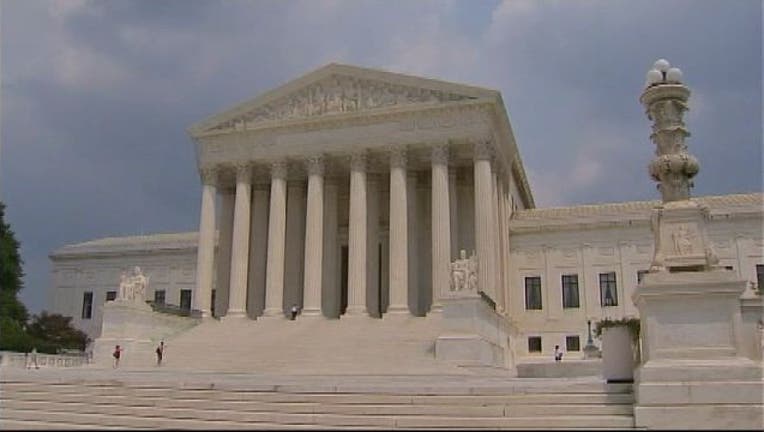Justices weigh meaning of 'one person, one vote'

WASHINGTON (AP) -- The Supreme Court is treading gingerly on a question of immense importance to the nation's growing Latino population: whether states must count all residents, or only eligible voters, in drawing electoral districts.
The justices on Tuesday displayed little of the aggressiveness that often marks Supreme Court arguments as they heard a case about the meaning of the principle of "one person, one vote." The court established 50 years ago that districts must be roughly equal in population.
Two Texas voters are asking the court to prohibit states from basing electoral maps on total population, instead of the number of eligible voters. They argue that including children and people who are not citizens inflates the voting power of urban residents and dilutes the votes of rural residents.
Civil rights groups say such a change would damage Latino political influence. Texas picked up four congressional seats after the 2010 census, mainly because of the growth in its Hispanic population.
If the challengers prevail, many of those new Texans would not be counted in drawing legislative district lines because they are too young to vote, not citizens or otherwise prohibited from voting.
Justice Anthony Kennedy at one point wondered whether states could produce districts that were roughly equal in terms of overall population and eligible voters.
"Why is one option exclusive of the other? Why can't they have both?" Kennedy asked.
Texas Solicitor General Scott Keller said such an outcome could only be achieved at the expense of other traditional requirements about redistricting, including relatively compact districts that don't split counties.
Kennedy sounded persuaded. "That sounds highly probable," he said.
Chief Justice John Roberts and Justice Samuel Alito appeared most open to the challengers' argument, but another usually reliable conservative voice was silent. Justice Antonin Scalia did not comment at all during the hour-long session.
"It is called ... one person, one vote. That seems to be designed to protect voters," Roberts said.
The court's liberal justices seemed more clearly disposed to upholding the districting plan for the Texas Senate that is being reviewed.
Questioning William Consovoy, the Texas voters' lawyer, Justice Ruth Bader Ginsburg noted that a decision in his favor would mean that women in America should have been excluded from redistricting decisions before they won the right to vote.
Ginsburg also pointed to a half-century tradition of states using total population. "Now you're saying they can't do it anymore," Ginsburg said.
Consovoy responded that if "tradition were the rule," the court's landmark "one person, one vote" cases would have come out the other way.
His clients, Texas residents Sue Evenwel and Edward Pfenninger, live in mainly rural districts outside Houston. Their districts have at least 170,000 more eligible voters than a downtown Houston district with equal population.
If the court upholds the Texas districts as drawn, it could say that the use of total population does not violate the Constitution. Or it could rule that states may choose which method to use.
Justice Department official Ian Gerhsengorn argued Tuesday that the once-a-decade census that produces the total population count is the only reliable population data.
Keller, representing Texas, urged the justices to allow states to choose.
A decision in Evenwel v. Abbott, 14-940, is expected by late June.

